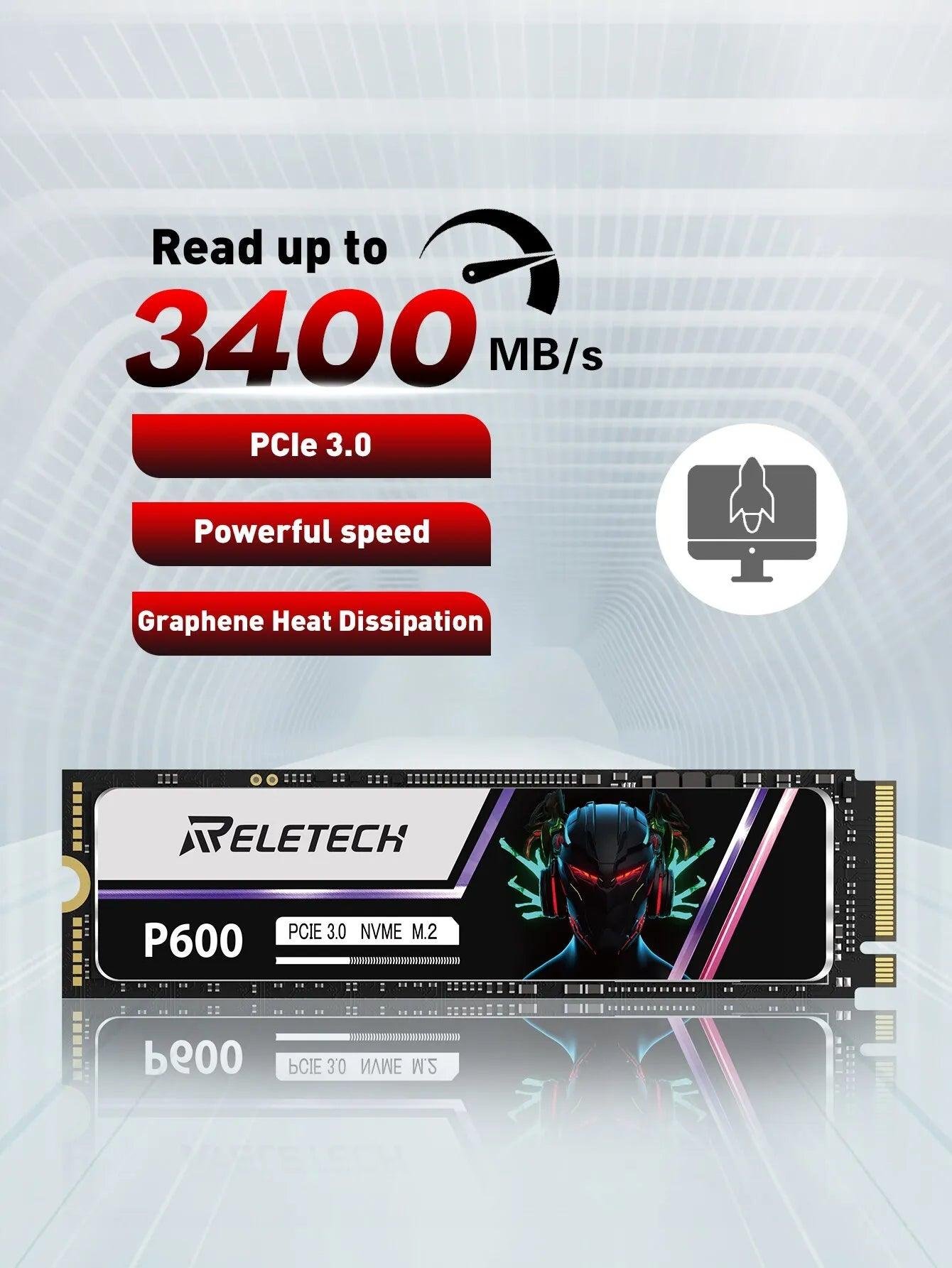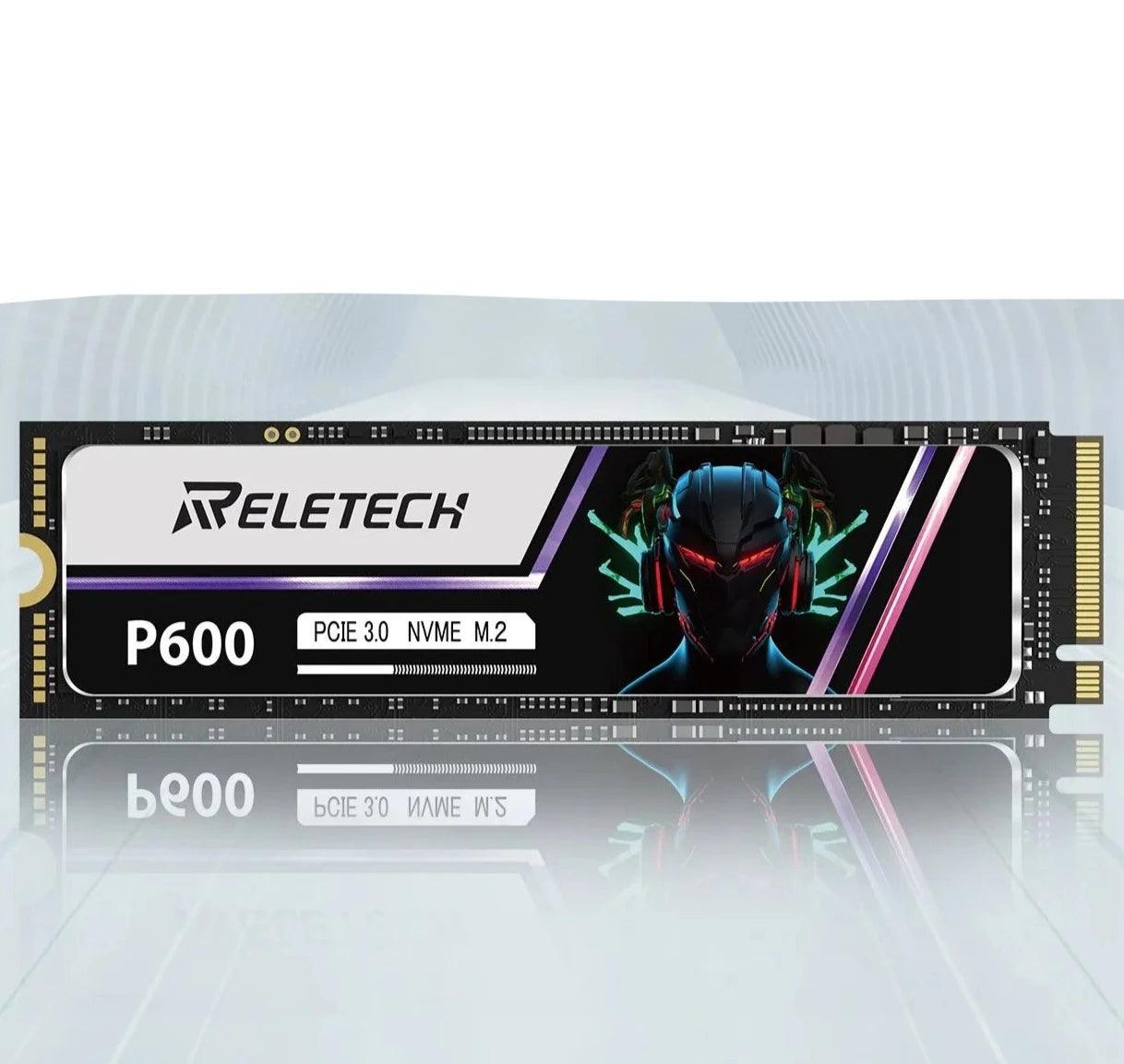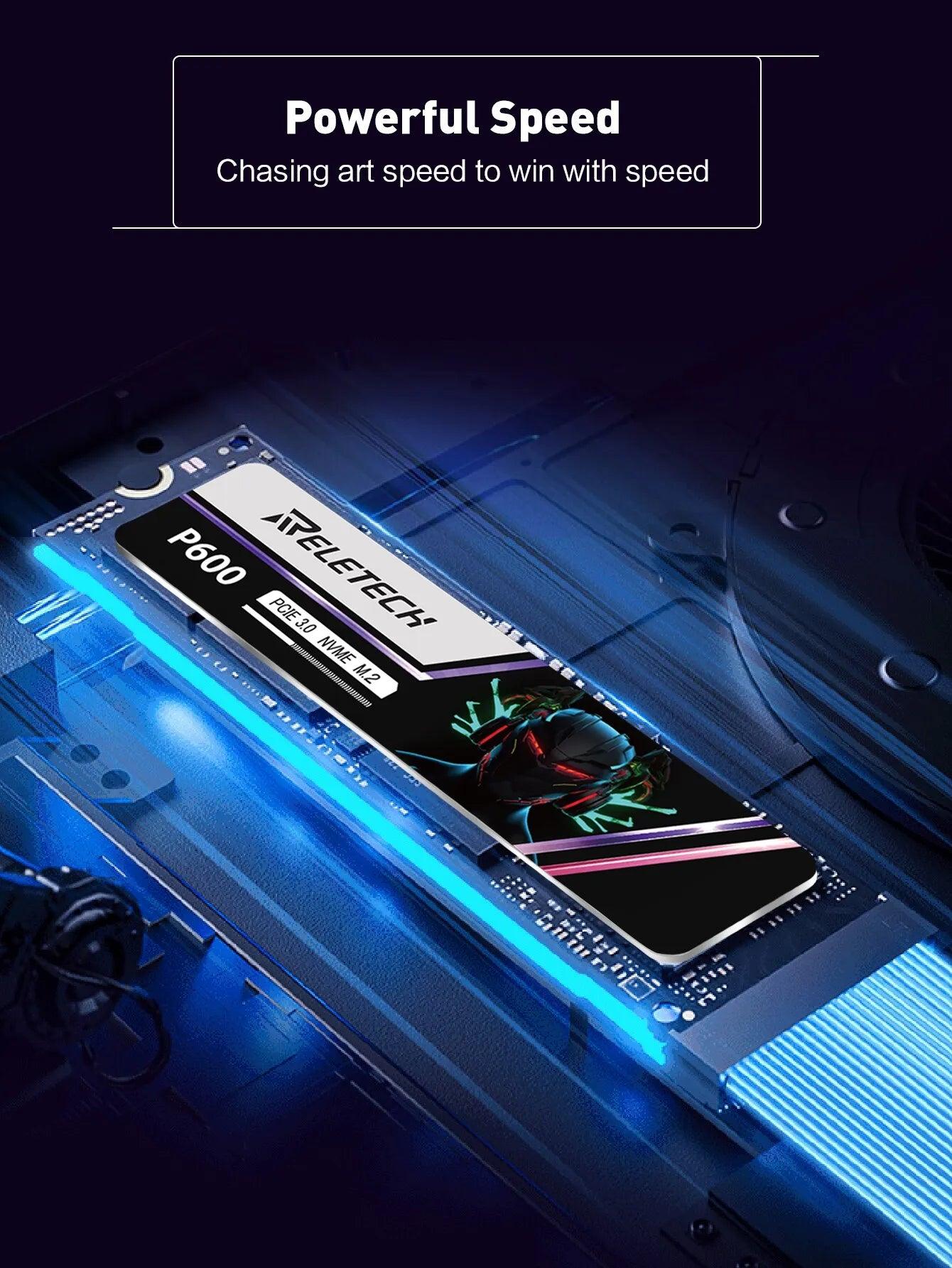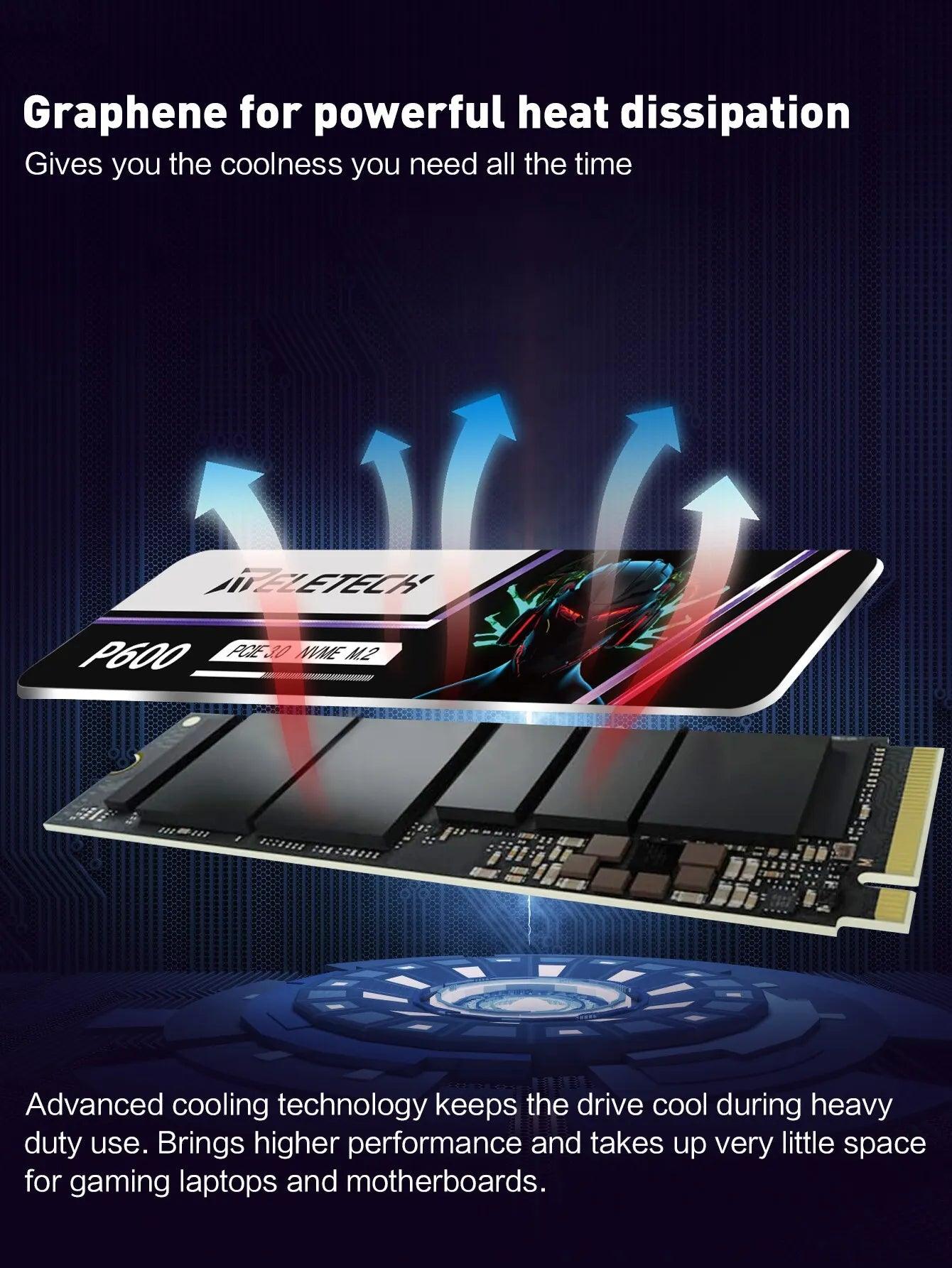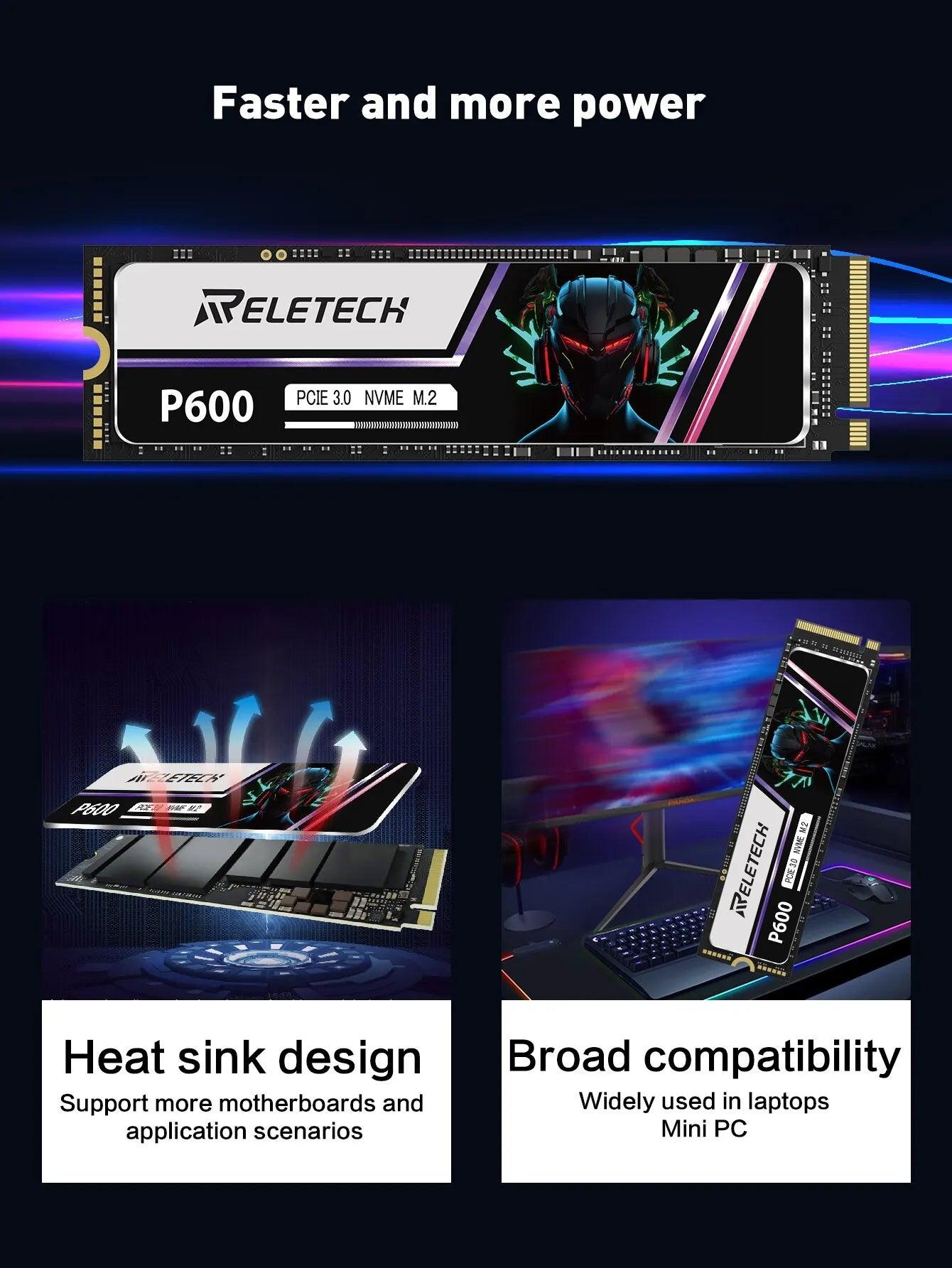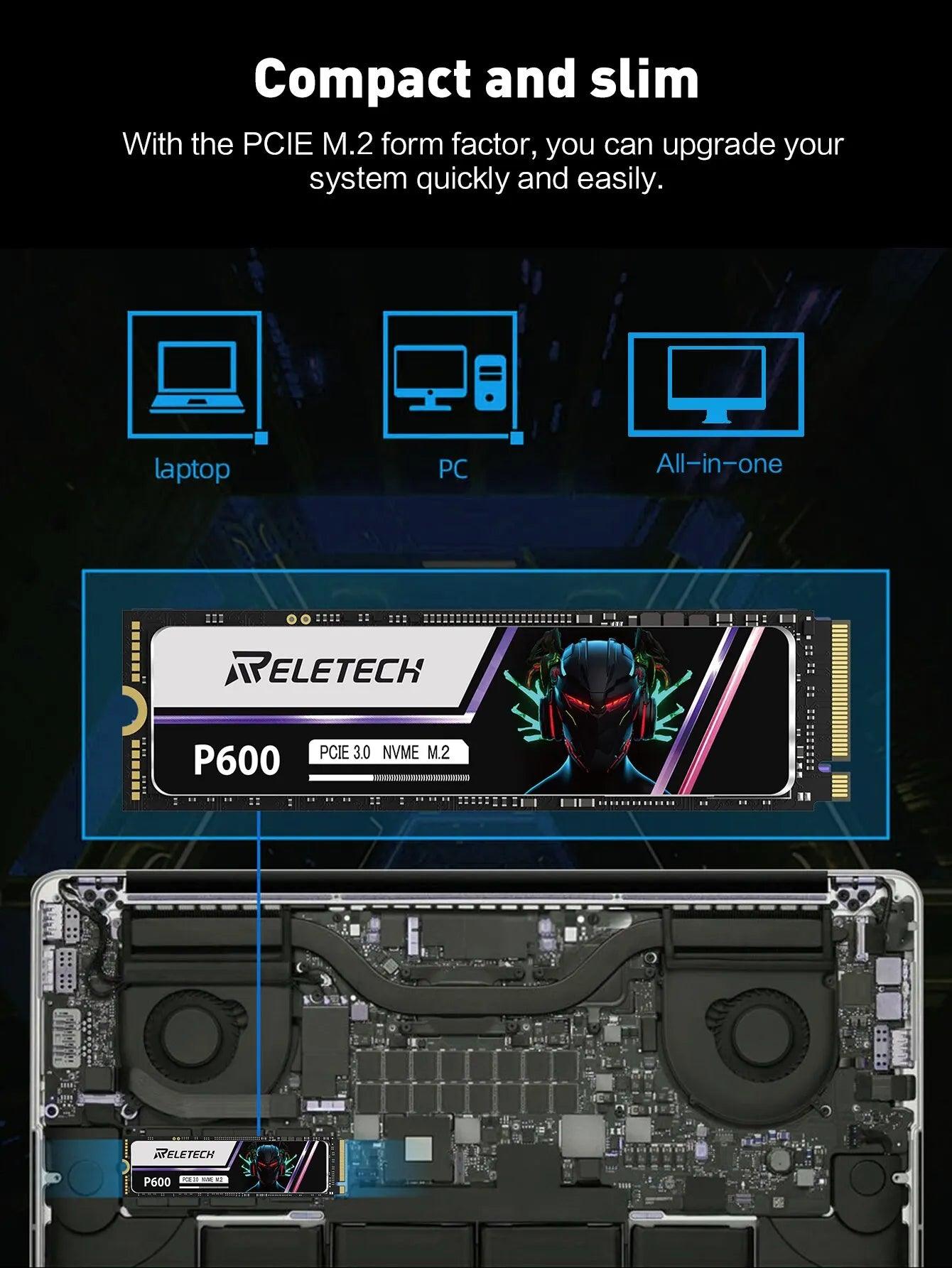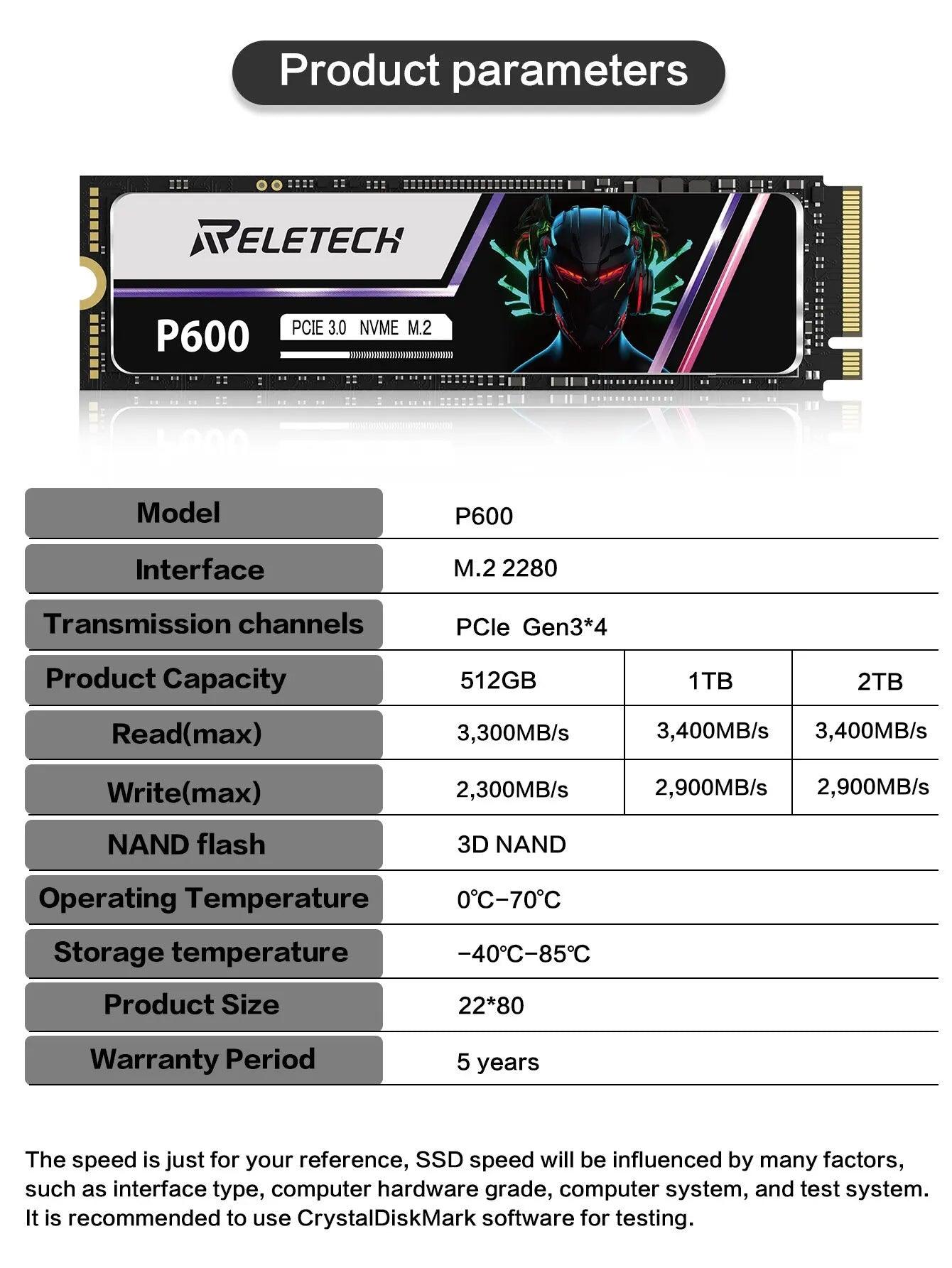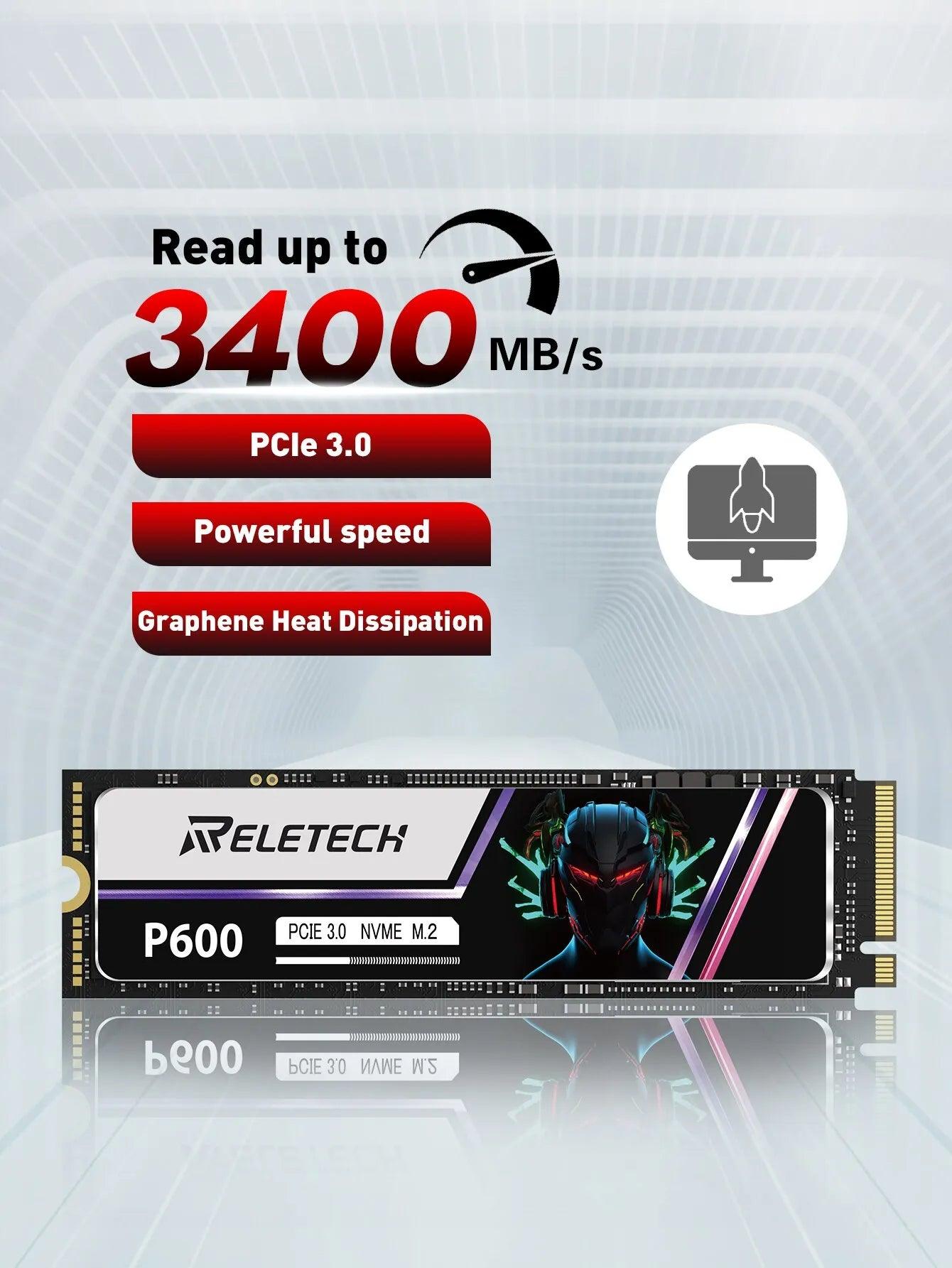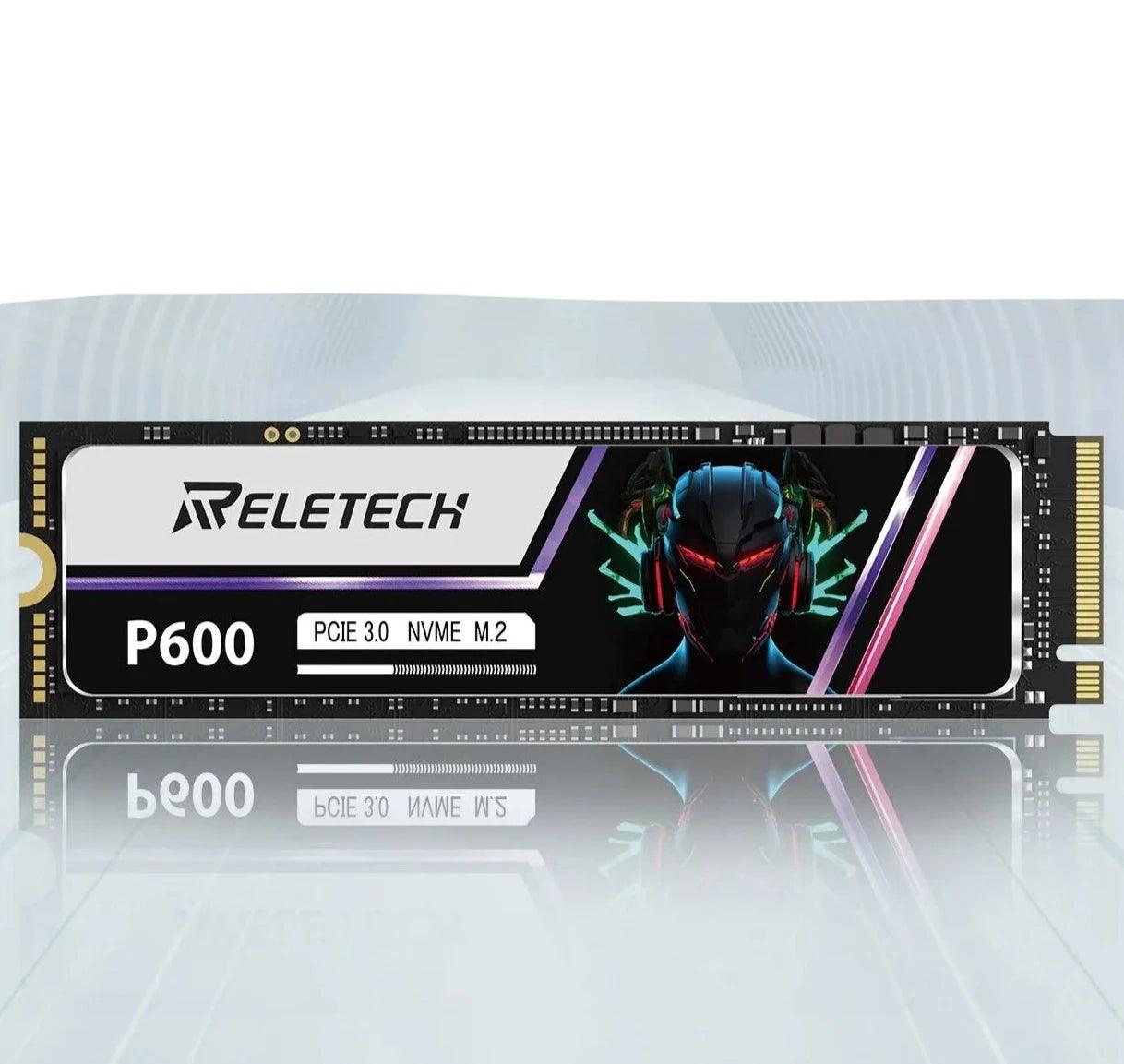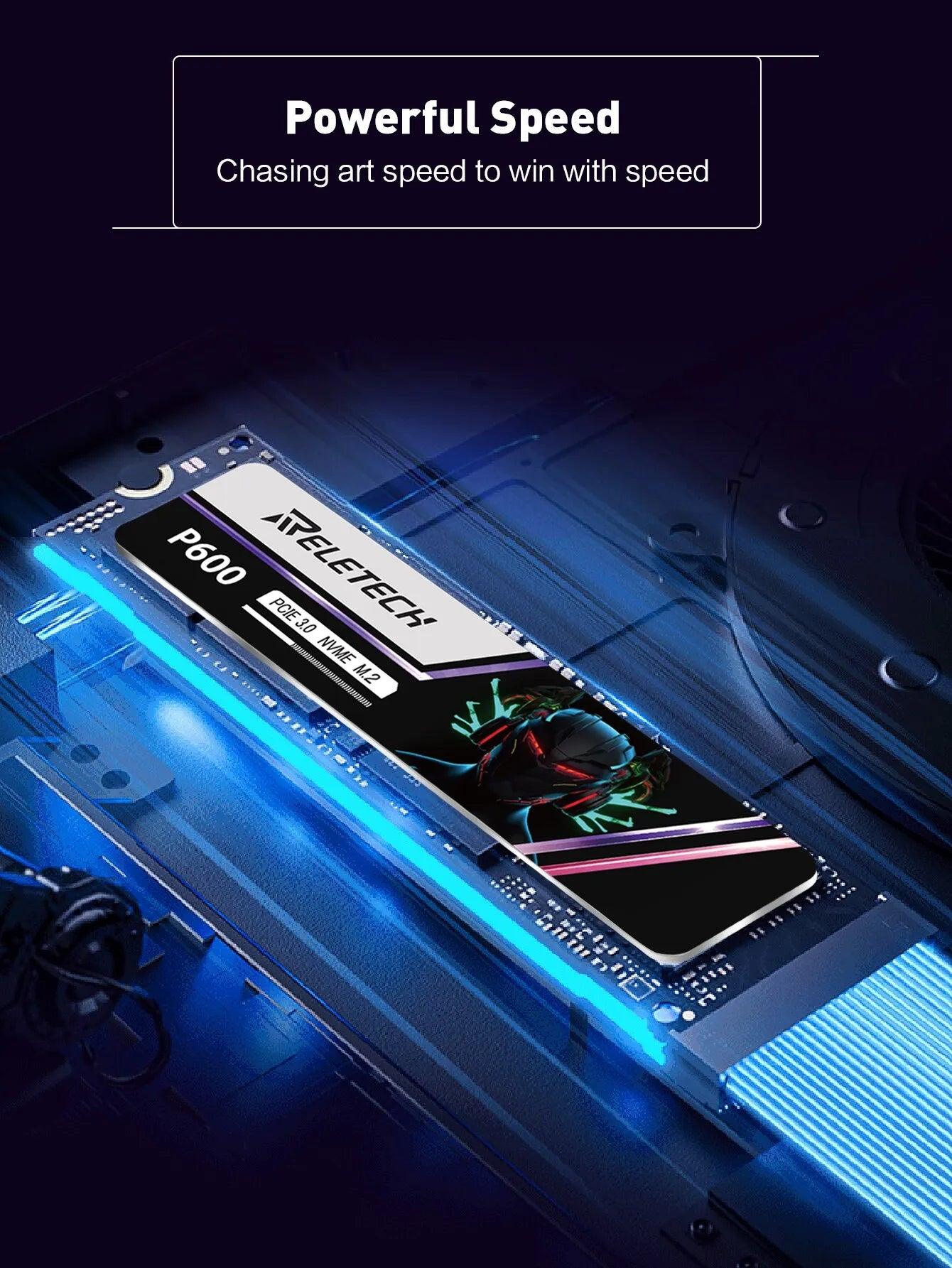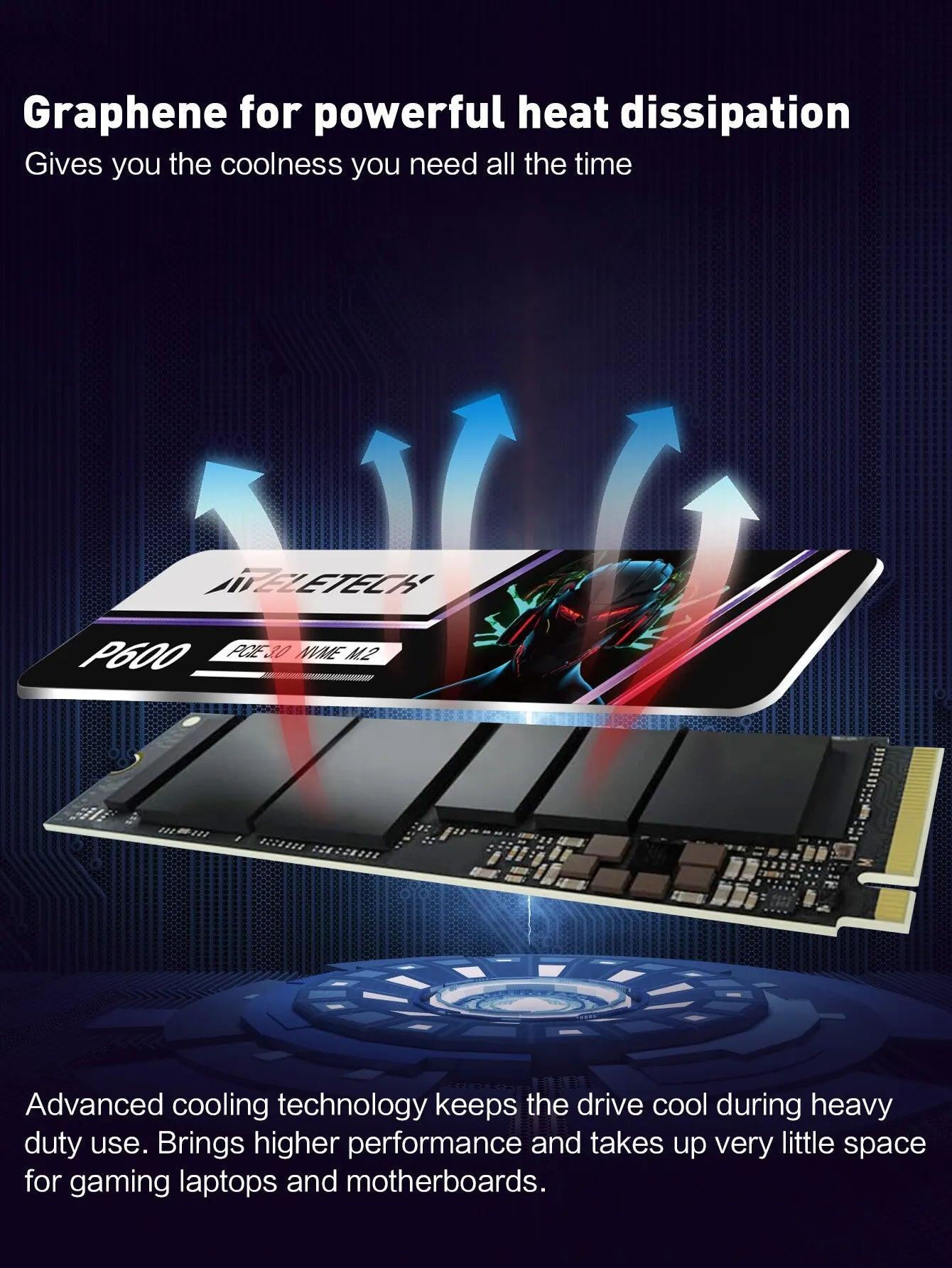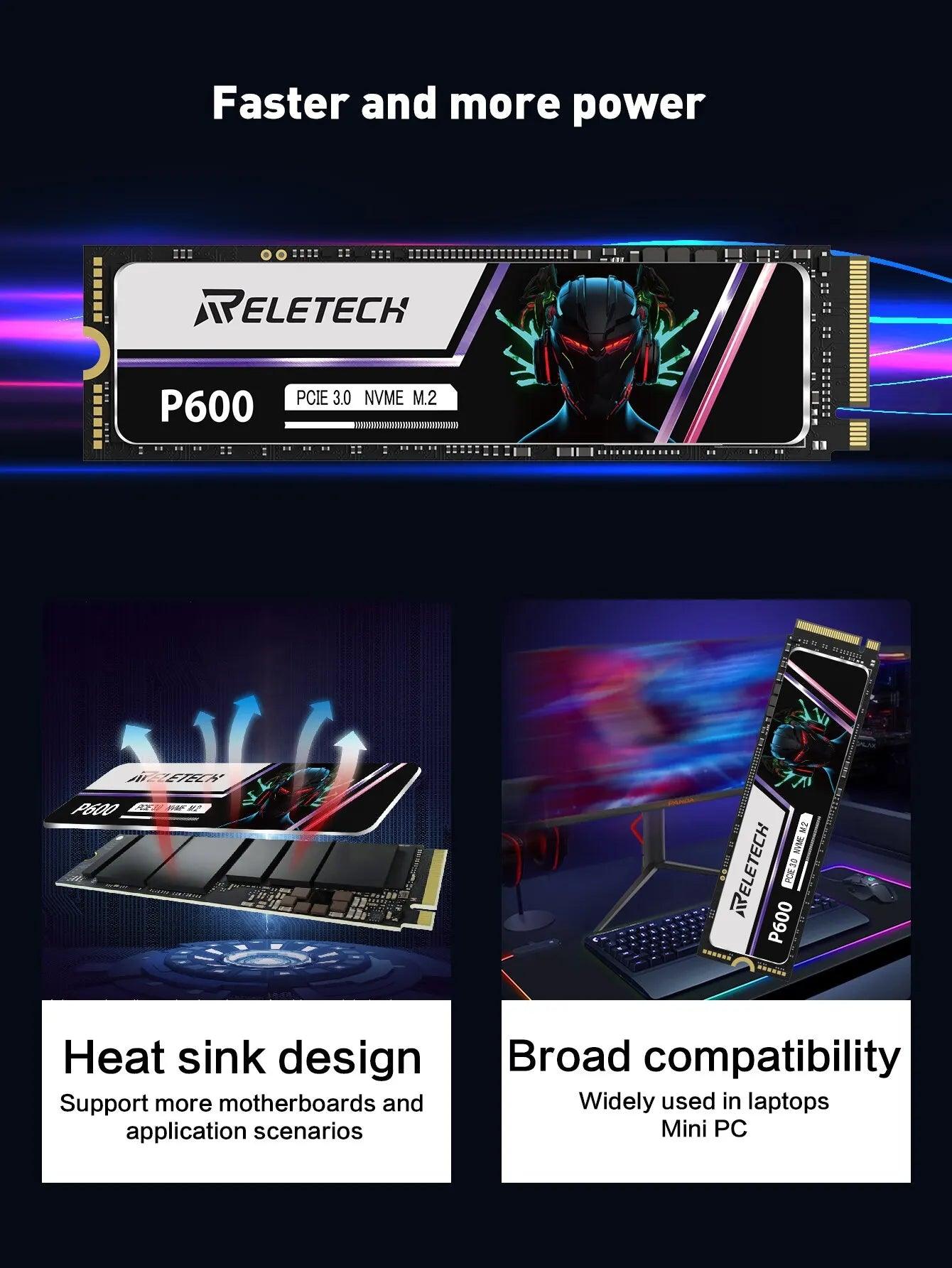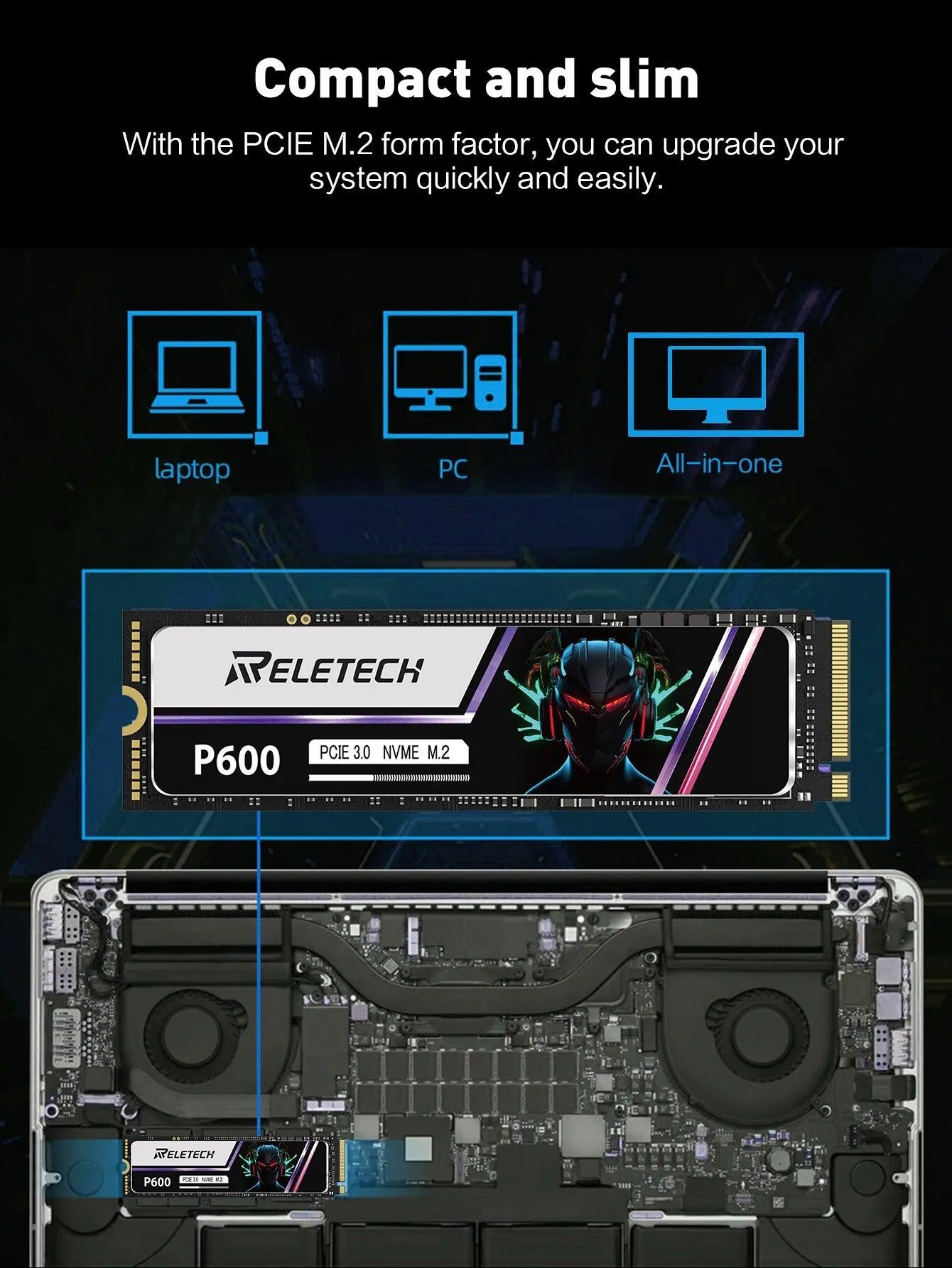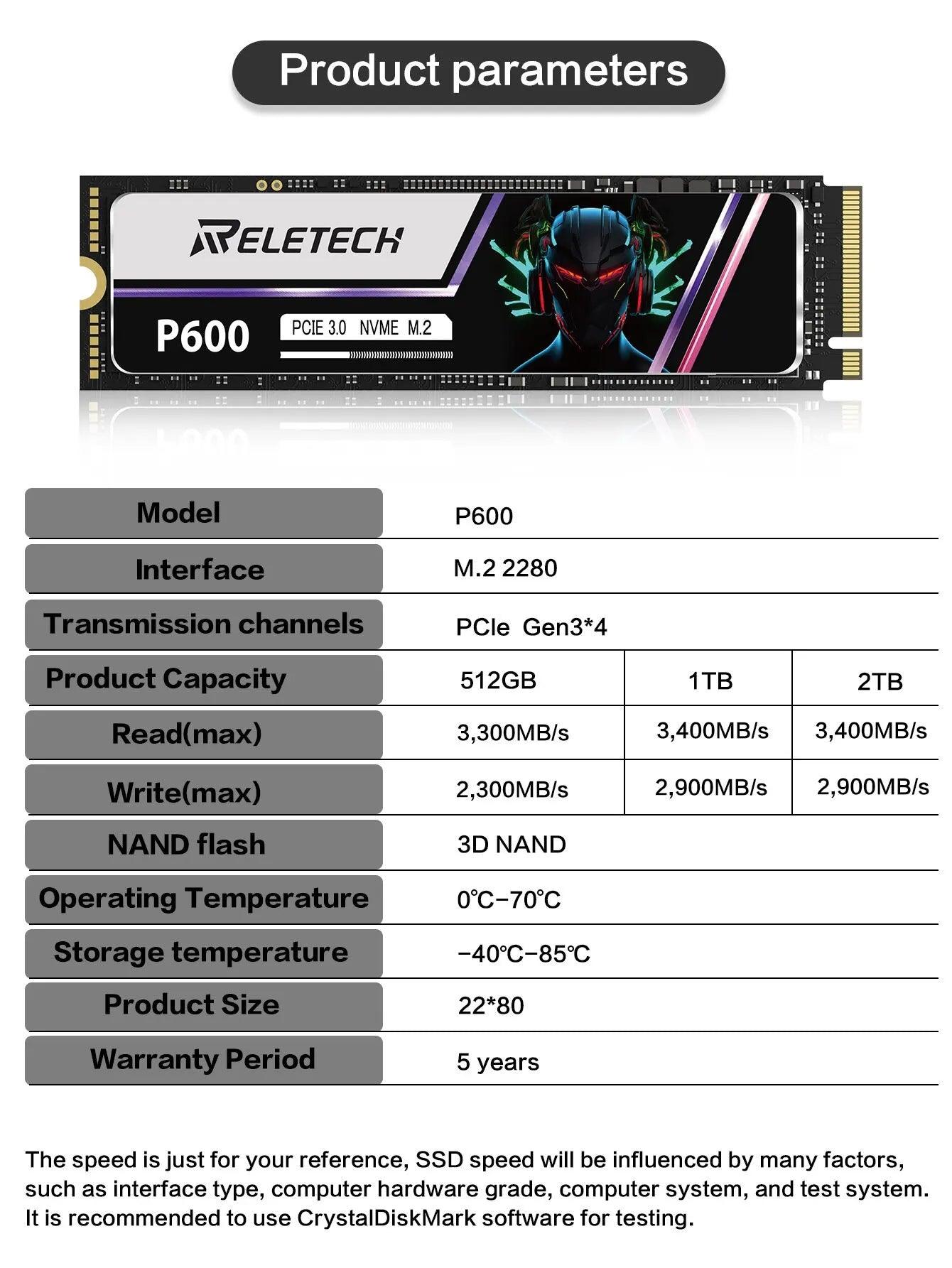Reletech P600 M2 SSD Drive Hard Disk
Reletech P600 M2 SSD Drive Hard Disk
Couldn't load pickup availability
SPECIFICATIONS
- Application: Desktop
- Application: Laptop
- Application: Server
- Application: Workstation
- Application: Industrial Computer
- Brand Name: Reletech
- Size: M.2 2280
- Package: Yes
- Nand Flash Type: TLC
- Controller: Other
- Transport Protocol: NVME
- Interface Type: PCI Express
- Interface Type: M.2 2280
- Cooling Fin: Yes
- Style: SSD
- Bus Type: PCIe 3.0x4
- Cache: NONE
- Max Sequential Write: 3000
- Certification: CE
- Certification: FCC
- Certification: RoHS
- Certification: KC
- Max Sequential Read: 3400
- RGB: no
- Type: Internal
- • TLC Nand Flash Type :The Reletech P600 M2 SSD uses TLC Nand flash type, which provides high performance and reliability.
- • NVMe Transport Protocol :With NVMe transport protocol, the Reletech P600 M2 SSD offers faster data transfer speeds and improved power efficiency.
- • PCIe 3.0x4 Bus Type :The Reletech P600 M2 SSD features a PCIe 3.0x4 bus type, which provides high-speed data transfer and improved compatibility with older systems.
- • M.2 2280 Interface Type :The Reletech P600 M2 SSD has an M.2 2280 interface type, which is widely used in laptops and desktops for easy installation and compatibility.
- • TLC NAND flash type:The Reletech P600 M2 SSD uses TLC Nand flash type, which provides high performance and reliability.
- • NVMe Transport Protocol :With NVMe transport protocol, this SSD can deliver faster data transfer speeds and improved system responsiveness.
- • PCIe 3.0x4 Bus Type:The Reletech P600 M2 SSD has a PCIe 3.0x4 bus type, which allows for faster data transfer and improved power efficiency.
- • M.2 2280 Interface Type:The M.2 2280 interface type ensures compatibility with a wide range of devices, making it a versatile option for upgrading your system's storage.
- • Cooling Fin :The Graphene cooling fin ensures that the SSD stays cool and operates efficiently even during intense workloads.
- Storage Type: Internal
- Caching Type: 3D NAND
- 512GB : Read (max) up to 3,300MB/s / Write (max.) up to 2,300MB/s
- 1TB:Read (max) up to 3,400MB/s / Write (max.) up to 2,900MB/s
- 2TB:Read (max) up to 3,400MB/s / Write (max.) up to 2,900MB/s
- The speed test is based on the 64-bit version of CrystalDiskMark 6.0, 1GB range, which will fluctuate depending on the configuration, for reference only
- Mean Time Between Failure (MTBF): 1,500,000 hours
Powerful Speed,Chasing art speed to win with speed
Graphene for powerful heat dissipation
Advanced cooling technology keeps the drive cool during heavyduty use. Brings higher performance and takes up very little spacefor gaming laptops and motherboards.
Faster and more power
Heat sink design,Support more motherboards andapplication scenarios
Broad compatibility,Widely used in laptops,Mini PC
High-speed solid state to boostyour performance
PS:Performance may vary depending on the firmware version of the SSD as well asthe system hardware and system configuration.
Compact and slim
With the PCIE M.2 form factor, you can upgrade your system quickly and easily.
Notice
About Capacity: Flash memory vendors are using decimal arithmetic:1MB = 1000KB,1G = 1000MB calculated, the operating system using binary arithmetic:1MB = 1024KB,1GB = 1024MB; so such as there are some differences between display capacity and nominal capacity of flash memory product 32gb is about 28.8gb; 64gb is about 59.5gb; 128gb is about 119gb As we are factory and we use 1000KB=1MB for easy calculate, also we use a little space as the Bad Bolck Management software for SSD's stable using, the real capacity will be: Capacity x 0.93.
About reading and writing speed
The actual speed will be directly affected by the configuration of the computer, theformat of the U disk/hard disk, the size and type of the copied files, and the number of files copied at the same time. therefore,The speed of the U disk/hard disk is different under different usage conditions inactual use, which is a normal phenomenon and not a quality problem!
Share
